By Sumaiya Farheen and Andrew Siyabalawatte, August 2023.
Flat feet, also known as fallen arches, is a common foot condition that affects millions of people worldwide. While some may consider it a hindrance, having flat feet is a natural anatomical variation that can be embraced with the right understanding and care.
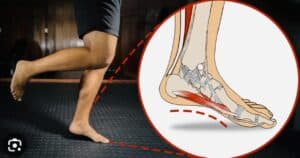
Flat feet occur when the arches on the inside of the feet flatten, causing the entire sole to contact the ground when standing. This condition can be congenital, present from birth, or develop over time due to factors like age, injury, or excessive strain on the feet.
Collapsed Arch? What is The Difference?
A collapsed arch is a case of flat feet that develops in adulthood as a result of the weakening of the ligament that supports the arch or as a result of posterior tibial tendon dysfunction. On the other hand, flat feet begin in childhood and result in the improper formation of the foot arch due to loading and postural weaknesses.
Posterior Tibial Dysfunction
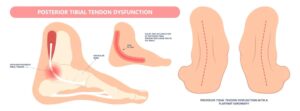
The posterior tibial tendon runs along the inside of the lower leg and foot. Its main functions are to help move the foot and support the foot’s arch. With overuse, this tendon can become painful with activities, such as walking and running. With continued strain, the tendon can become overstretched or rupture, leading to the collapses of the foot’s arch, making the foot flat.
Changes to posture and strengthening of the muscles associated with the arch of the foot, will help to improve symptoms and prevent further damage in the future.
What Are The Main Causes of Flat Feet?
The main cause of flat feet, also known as fallen arches, can be either congenital (present from birth) or acquired (developed over time). Here are the primary factors contributing to flat feet
Genetics– In many cases, flat feet can be inherited from one or both parents. If either parent has flat feet, there is an increased likelihood of their children having them as well.
Weak or Torn Tendons– The posterior tibial tendon, responsible for supporting the arch, can weaken or become damaged due to injury, overuse, or age. When the tendon is unable to hold up the arch properly, flat feet can develop.
Injury– An injury to the foot or ankle, such as a fracture or dislocation, can lead to changes in the foot’s structure, causing the arch to collapse.
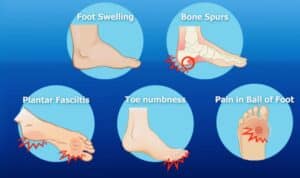
Medical Conditions– Certain medical conditions can contribute to the development of flat feet, including conditions that affect the muscles and tendons, such as arthritis, diabetes, and neuromuscular disorders.
Age and Wear and Tear– As people age, the supportive structures in the feet can weaken, leading to a decrease in arch height and the development of flat feet.
Obesity– Excess body weight can put additional strain on the feet and contribute to the development of flat feet.
To identify flat feet, you can perform a wet foot test and observe if your footprint lacks a visible arch. Look out for foot pain, especially around the arch and inside of the ankles, and check for uneven shoe wear due to overpronation. Comparing your feet to images of normal arches can also provide insights.
Celebrities with Flat Feet
In the world of fame, even celebrities deal with common foot issues. Stars like Sarah Jessica Parker, Vince Vaughn, and Elton John have openly discussed their flat feet challenges. It’s essential to remember that many people, including celebrities, may have flat feet, but it doesn’t define them or limit their abilities. With proper care and management, individuals with flat feet can lead active and fulfilling lives.
Arched Feet vs Flat Feet – Embracing Our Unique Footprints
Pros and Cons Of Arched Feet–
Visible curve along the inside of the foot
Does offer shock absorption and stability
Potential challenges like plantar fasciitis
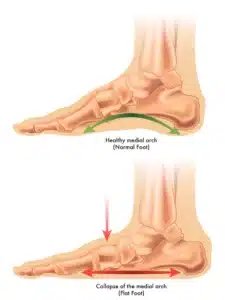
Pros and Cons of Flat Feet-
Absence of arch, entire sole touches the ground
May lead to overpronation and foot discomfort
Could improve the absorption of shock
Helps foot act like a flipper during swimming
The Bunion
Though several factors contribute to bunions, high arches and pes planus are significant causes.
A bunion, or hallux valgus, occurs when the joint at the base of the big toe and the first metatarsal bone fall out of alignment. This misalignment causes the big toe to point toward the little toe and the first metatarsal bone to drift outward.
. Pain and inflammation develops when shoes start rubbing on the bump.
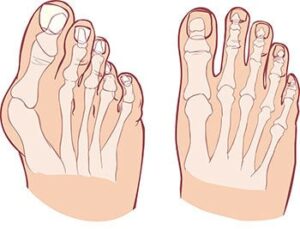
Tailor’s bunion, or bunionette, can cause pain near the pinky toe for those with flat feet. The exact cause is unknown, but it is believed that inherited factors (runs in the family) and the shape of the bones in the feet play a big role in the cause. Footwear is often listed as a contributing factor. Poorly fitting footwear will make your foot more uncomfortable.
Find relief through supportive footwear, orthotic inserts, and foot exercises for better foot health and overall well-being.
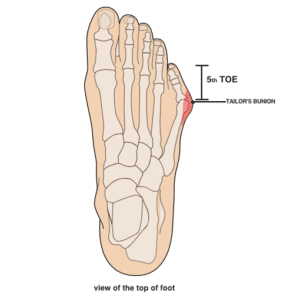
How To Rebuild The Arches
The main difference between collapsed arches and flat feet lies in their origin and progression. Collapsed arches result from a weakening of the arch structure, while flat feet can be a natural variation.
Strengthening
Perform arch-strengthening exercises like toe curls and arch lifts.
Wear supportive footwear with good arch support.
Be mindful of foot mechanics and avoid overpronation.
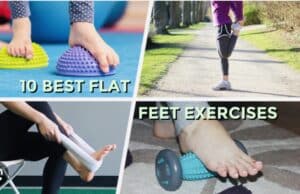
Stretch regularly to improve flexibility in the calf muscles and Achilles tendon.
Consider physical therapy for a personalized exercise program.
Manage weight to reduce stress on the feet. Remember, professional evaluation may be needed for persistent pain or discomfort.
Arch Support For Feet
Arch support insoles can not only provide the support required to maintain a normal arch, but they may even prevent further problems. A good Osteopath or Chiropractor, would consider a potential leg length discrepancy (shorter leg) as a possible cause of flat feet which, may even prompt the recommendation of a heel lift to add to the arch support on the affected side.
My Personal Recommendation : ICB Insole With Arch Support
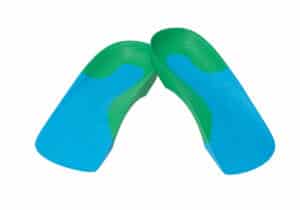
I have personally used and recommended these cost-effective insoles from ICB Medical to hundreds of my clients over the years. They are highly durable and provide good shock absorption and support in maintaining a good foot position, all while providing comfort when wearing them in most shoes. They do all this without breaking the bank.
Improving flat feet varies with age, severity, and consistency in treatments. Childhood progress is possible, while some need ongoing care. Embrace uniqueness and don’t fear flat feet. Manage discomfort and live fully. Celebrate your distinctive feet, a symbol of self-acceptance and connection with your body. Stride confidently and be uniquely you!

